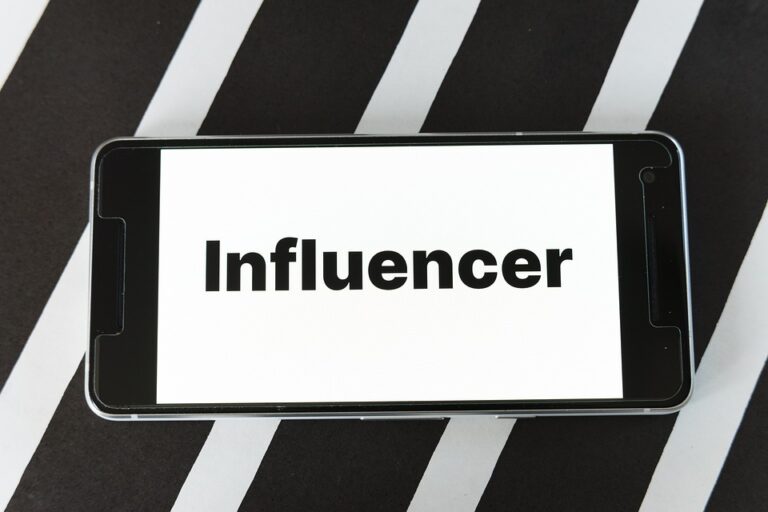Brand Partnerships in 2023: Trends and Tactics for Influencer Collaborations
As we navigate through 2023, the landscape of brand partnerships has evolved drastically, particularly in the realm of influencer collaborations. Brands are increasingly recognizing the potential of influencers for authentic engagement and reaching targeted demographics. In this article, we’ll explore the latest trends and tactics shaping influencer updates, guiding brands to maximize their collaborations effectively.
The Current State of Influencer Marketing
In recent years, influencer marketing has solidified its position as a mainstay in advertising strategies. A report by Statista indicates that 70% of teenagers trust influencer opinions more than traditional celebrities. This statistic emphasizes the credibility and relatability that influencers bring to brand partnerships.
Shifts in Audience Preferences
Today’s consumers are empowered by information and have refined tastes. They demand authentic interactions over promotional sales pitches. According to a study by the Digital Marketing Institute, over 60% of consumers actively seek out user-generated content (UGC) before making a purchase decision. This underscores the importance of fostering genuine relationships between brands and influencers, where storytelling reigns supreme.
Key Trends in Influencer Collaborations
1. Micro-Influencers Are Taking Center Stage
While mega-influencers often boast millions of followers, brands are increasingly leaning towards micro-influencers—those with follower counts between 1,000 and 100,000. Research by Influencer Marketing Hub shows that micro-influencers typically achieve 60% higher engagement rates compared to their macro counterparts. This trend highlights that smaller influencers can offer a more authentic connection with their audience, leading to better results in brand partnerships.
2. Emphasis on Long-Term Partnerships
In 2023, brands are moving away from one-off campaigns and are instead focusing on establishing long-term relationships with influencers. By forming these enduring partnerships, brands can cultivate a more authentic narrative that resonates with audiences over time. Long-term collaborations allow for deeper storytelling and more compelling content, providing ongoing engagement opportunities for both the influencer and the brand.
3. Sustainability and Social Responsibility
Consumers are increasingly leaning towards brands that demonstrate social and environmental responsibility. Influencers focusing on sustainable living and ethical choices are becoming vital partners for brands wishing to convey their commitment to these ideals. In fact, a study by Nielsen found that 73% of millennials are willing to pay more for sustainable products, presenting a great opportunity for brands to connect with their target demographic through responsible influencer partnerships.
Tactics for Successful Influencer Collaborations
1. Prioritize Authenticity
When choosing influencers, brands should prioritize those who align with their values and messaging. Authenticity is key; partnerships should feel natural and seamless rather than forced. Research suggests that campaigns perceived as inauthentic can backfire, leading to a loss of trust amongst consumers. Brands should look for influencers who genuinely use and believe in their products.
2. Utilize Multimedia Content
Video content remains one of the most engaging formats for influencer collaborations. Brands can leverage platforms like Instagram Reels, TikTok, and YouTube Shorts, where influencers can showcase products in use. This dynamic approach not only captures attention but also encourages interaction and shares. Suggested multimedia content includes:
-
Image 1: An influencer with a structured layout of sustainability-focused products. (Alt text: Influencer Updates on sustainable products)
- Image 2: A video collage of behind-the-scenes content showcasing an influencer’s authentic experience with a brand. (Alt text: Influencer Updates behind-the-scenes brand collaboration)
3. Leverage User-Generated Content
Incorporating UGC into influencer campaigns can amplify authenticity. User-generated content allows influencers to harness their followers’ feedback and experiences, portraying a well-rounded view of the brand. Brands should encourage influencers to highlight their audience’s interactions with their products, creating a sense of community and shared experience.
Measuring Success in Influencer Partnerships
As with any marketing initiative, measuring success is crucial. Brands should evaluate campaign effectiveness through:
- Engagement Rates: Likes, shares, comments, and overall interaction with campaign content.
- Traffic Analytics: Monitoring website traffic or sales conversions directly linked to influencer activities.
- Brand Sentiment Analysis: Using tools to gauge public perception and sentiment surrounding the brand after the campaign.
Investing in tracking tools can ensure that brands do not merely rely on vanity metrics, but rather focus on results that contribute to the bottom line.
Conclusion
The collaboration between brands and influencers is continually transforming in response to audience preferences and societal changes. Understanding the latest trends and employing strategic tactics can significantly impact the effectiveness of these partnerships. By prioritizing authenticity, focusing on long-term relationships, and leveraging diverse content formats, brands can navigate the nuanced landscape of influencer marketing effectively.
For more insights and influencer updates, check out our articles on Top Influencer Marketing Strategies for 2023 and Sustainable Brands Leading the Charge. Additionally, you can explore external resources like HubSpot’s Influencer Marketing Trends to deepen your understanding of this ever-evolving industry.
Whether you’re just starting with influencer collaborations or looking to refine your approach, staying updated on these trends will empower your brand to connect authentically with your audience.


